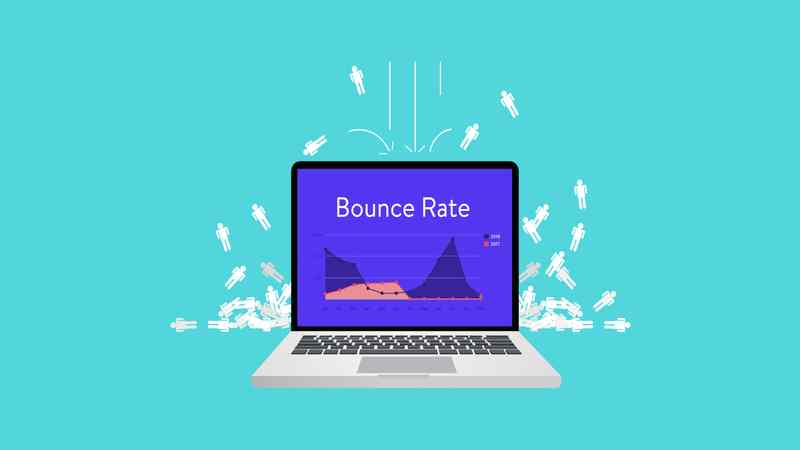A high bounce rate is the most common problem with new websites or blogs. It is good to see plenty of traffic in google analytics. But painful when most of the traffic leaves your site without any dealing.
But now you don’t have to worry about it. Because with the below smart strategies you can easily hold your traffic. You can convert them into loyal customers.
All you need to do is make minor changes to your website and content plan to reduce your bounce rate.
Let’s find out what exactly you need to do:
What is the Bounce Rate?
Before moving forward, it is necessary to deeply understand the bounce rate. Keep one thing in your mind, every website and blog has some amount of bounce rate.
Now the question is how much bounce rate is normal for a business site or a blog. Blogs usually have a higher bounce rate than business sites.
In simple words, a bounce rate is a group of users or percentage of visitors that come to your site but quickly leave it without interacting or moving to other pages of your site.
According to backlinko the average bounce rate for a website should be between 41% to 51 %. If your site bounce rate is in this range then you are lucky and don’t need to do anything about it.
Above 60% is not good but above 80% bounce rate is really bad for a business.
What is the difference between Bounce Rate and Exit Rate?
Bounce rate and Exit rate are similar to each other but there is one big difference.
Bounce rate is when a user opens your page from the search list and after some time, he or she clicks the back button of their browser or closes their browser.
This is called bounce rate means the user is bouncing back from the same landing page.
But,
The Exit rate is when a user visits page A of your site from the search result page of google. Then also visit another page of your website and after some time leaves your site or close the browser.
This is called exit rate because the user does not exit from the same landing page, he also visits another page of your website and exits from there.
Why do Visitors Bounce from Your Site?
Before moving to the solutions to higher bounce rate it is important to understand the main causes of it.
Miss Guiding Page:
The information on the page is not relevant to the topic or is partially related.
For example, your search for the best juicers under $70 and you open a page from search results. The title of the page is “the best juicer for home under $70”.
But when you visit the page, you find the home page of the website instead of a list of juicers with comparison.
You will definitely hit the back button of your browser. This bad practice of navigating the traffic to the wrong page increases the bounce rate.
Ugly Design:
People judge websites from their design. The content comes in second place because layout is what people right away when they land on your site.
You cannot expect a normal bounce rate from ugly looking website. This is the reason we always say hire professional web developers for designing your site.
Worst User experience:
No doubt you need a good professional-looking website. To reduce bounce rate, you also need good navigation, easy to read a text for a good user experience.
Nobody likes a website that is not easy to use. Bad user experience is one of the main causes of high bounce rates.
How You Can Improve Your Bounce Rate?
Use Videos:
According to recent research, people like to watch videos instead of reading huge chunks of text.
To hook people, you should use videos in your blog posts. It is easy to make a 2 minutes video on a topic and embed it on your page.
You can also find useful videos on YouTube about your niche or topic of the page. But it is best to generate your own content.
Because you understand your niche better than others.
Improve Page Loading Speed:
Slow loading pages are the cause of a higher bounce rate. Reduce the page loading time and you will see your bounce rate is reducing significantly.
Your website should open and load in less than 3 seconds. Because people only wait for 3 seconds for a web page to load.
They have hundreds of other pages to read on the same topic.
To increase your page speed first of all you should compress the images. Use paid plugins like imagify to reduce the image size.
Nowadays google uses webp format for images. I know there are some browsers that do not serve webp format.
But plugins like imagify store webp and another general format of images. It serves webp when visitors’ browser is capable of delivering the format otherwise it displays jpg or other normal image formats.
In short with this plugin, you don’t have to worry about webp or image compression headaches.
Use Good Hosting:
Hosting is the place where we store all our files and documents. If you are using a shared hosting plan. Then you need to move to the single hosting plan to deliver things at a faster rate.
In shared hosting, 4 to 6 websites use a server space. This slows down the speed of data delivery.
Write Easy to Read Content:
Do not make your content hard to read for your audience. According to a survey, you should write content that a 5th standard student can easily read and understand.
Do not write the bookish language. Write as you speak in your real life. While writing imagines that you are writing this page for your best friend.
Check grammar and spelling before publishing the content. For this task, you can use Grammarly tools.
Small Paragraphs:
Do not write huge paragraphs because nobody has time to read them. Tell your story in a few sentences – make short paragraphs that are easy to read (3 to 4 lines max).
Use a good amount of white space to break a large amount of text. White space gives relaxation to readers’ eyes and encourages them to finish the reading.
Use subheadings:
To break your large chunk of paragraphs you should use many subheadings. Then under these subheadings use 2 to 4 lines.
Subheadings also help in optimizing your ranking in SERPs.
They also make a page scannable and it is good to hook the audience. Most people scan the pages instead of reading the whole text.
Use images:
Use 4 to 6 images minimum on each web page to gain the trust of your audience. Images make content beautiful and appealing.
Do not copy images from other sites and also do not download from google images. If you are serious about your business then use original images.
Buy images from stock images like sites or click on your own.
Many images on google image are subject to Copywrite and you do not want a Copywrite strike on your site.
There are many sites that give free images to members, find them, register, and enjoy free genuine images.

